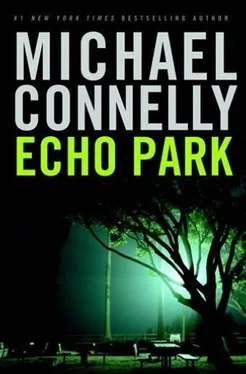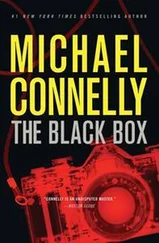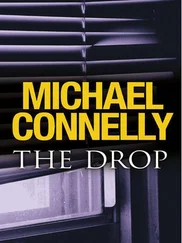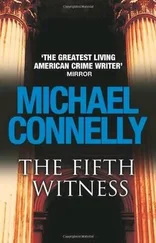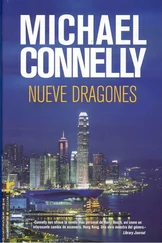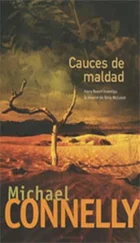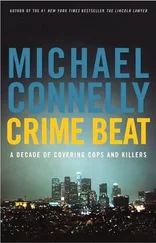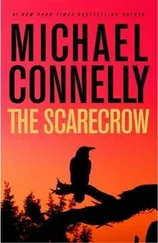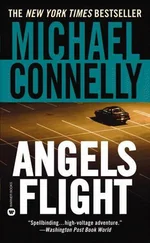After hearing their briefing, Pratt gave his approval for them to work with O’Shea and only became animated when he issued a warning about Raynard Waits’s attorney, Maury Swann.
“Let me tell you about Maury,” Pratt said. “Whatever you do when you meet him do not shake his hand.”
“Why not?” Rider asked.
“I had a case with him once. This is way back. It was a gangbanger on a one-eighty-seven. Every day when we started court, Maury made a big deal of shaking my hand and then the prosecutor’s. He probably would have shaken the judge’s hand, too, if he’d gotten the chance.”
“So?”
“So after his guy was convicted he tried to get a reduced sentence by snitching out the others involved in the murder. One of the things he told me during the debriefing was that he thought I was dirty. He said that during the trial Maury had told him he could buy all of us. Me, the prosecutor, everybody. So the banger had his homegirl get him the cash and Maury explained to him that every time he was shaking our hands he was paying us off. You know, passing the cash palm to palm. He always did those two-handed shakes, too. He was really selling it to his guy while all along he was keeping the cash.”
“Holy shit!” Rider exclaimed. “Didn’t you guys work up a case on him?”
Pratt dismissed the idea with a wave.
“It was after the fact and besides it was a bullshit he-said-he-said case. It wouldn’t have gone anywhere-not with Maury being a member of the bar in good standing and all. But ever since then I heard that Maury likes shaking hands a lot. So when you get in that room with him and Waits, don’t shake his hand.”
They left Pratt’s office, smiling at the story, and returned to their own workstation. The division of labor had been worked out on their walk back from the courthouse. Bosch would take Waits, and Rider would take Fitzpatrick. They would know the files inside and out by the time they sat across the table from Waits in the interview room the following day.
Since Rider had less to read in the Fitzpatrick case she also would finish the filing on Matarese. This meant Bosch was cleared to study full-time the world of Raynard Waits. After pulling out the Fitzpatrick file for Rider, he chose to take the accordion folder O’Shea had given them down to the cafeteria. He knew the lunch crowd would be thinning out and he would be able to spread the files out and work without the distractions of the constantly ringing phones and chatter of the Open-Unsolved squad room. He had to use a napkin to clean a table in the corner but then quickly settled into his review of the materials.
There were three files on Waits. They included the LAPD murder book compiled by Olivas and Ted Colbert, his partner in the Northeast Division Homicide squad, a file on a prior arrest and the prosecution file compiled by O’Shea.
Bosch decided to read the murder book first. He quickly became acquainted with Raynard Waits and the details of his arrest. The suspect was thirty-four years old and lived in a ground-floor apartment on Sweetzer Avenue in West Hollywood. He wasn’t a large man, standing five foot six and weighing 142 pounds. He was the owner-operator of a one-man business-a residential window-cleaning company called ClearView Residential Glass Cleaners. According to the police reports, he came to the attention of two patrol officers, a boot named Arnolfo Gonzalez and his training officer, Ted Fennel, at 1:50 a.m. on the night of May 11. The officers were assigned to a Crime Response Team which was watching a hillside neighborhood in Echo Park because of a recent rash of home burglaries that had been occurring on the nights of Dodgers home games. Though in uniform, Gonzalez and Fennel were in an unmarked cruiser near the intersection of Stadium Way and Chavez Ravine Place. Bosch knew the location. It was at the remote edge of the Dodger Stadium complex and above the Echo Park neighborhood that the CRT teams were watching. He also knew that they were following a standard CRT strategy: to stay out on the perimeter of the target neighborhood and follow in any vehicle or persons who looked suspicious or out of place.
According to the report filed by Gonzalez and Fennel, they grew suspicious as to why a van marked on the sides with signs that said ClearView Residential Glass Cleaners was out and about at two in the morning. They followed at a distance and Gonzalez used night-vision binoculars to get the van’s plate number. He then entered it into the car’s mobile digital terminal-the officers choosing to use the onboard computer rather than the radio in case the burglar working the neighborhood was equipped with a police radio scanner. The computer kicked back a flag. The plate was registered to a Ford Mustang with an address out in Claremont. Believing that the license plate on the van was stolen and that they now had probable cause to stop it, Fennel accelerated, put on the UC car’s grille lights and stopped the van on Figueroa Terrace near the intersection of Beaudry Avenue.
“The driver of the vehicle appeared agitated and leaned out of the van’s window to talk to Officer Gonzalez, an effort to block the officer from conducting a visual survey of the interior of the vehicle,” the arrest summary read. “Officer Fennel approached the vehicle’s passenger side and beamed his flashlight into the van. Without entering the vehicle, Officer Fennel was able to notice what appeared to be several black plastic trash bags on the floorboard in front of the front passenger seat of the vehicle. A substance appearing to be blood could be seen leaking from the cinched mouth of one of the bags and onto the floor of the van.”
According to the report, “The driver was asked if that was blood leaking from one of the bags and he stated that he had cut himself earlier in the day when a large plate glass window he was cleaning shattered. He stated that he had used several glass-cleaning rags to clean up the blood. When asked to show where he was cut the driver smiled and then suddenly made a move to restart the vehicle’s ignition. Officer Gonzalez reached through the window to restrain him. After a short struggle the driver was removed from the vehicle and placed on the ground and handcuffed. He was then moved to the backseat of the unmarked car. Officer Fennel opened the vehicle and inspected the bags. At this time Officer Fennel found the first bag he opened contained human body parts. Investigative units were immediately summoned to the scene.”
The driver’s license of the man taken out of the van identified him as Raynard Waits. He was booked into the holding tank at Northeast Division while an investigation of his van and the plastic trash bags carried on through the night on Figueroa Terrace. Only after Detectives Olivas and Colbert, the on-call team that night, took over the investigation and retraced some of the steps taken by Gonzalez and Fennel was it learned that the rookie officer had typed the wrong license plate number into the MDT, typing an F for an E and getting the plate registration for the Mustang out in Claremont.
In law enforcement terms it was a “good faith error,” meaning the probable cause to have stopped the van should still hold because the officers had been acting in good faith when an honest mistake was committed. Bosch assumed that this was the point of the appeal Rick O’Shea had mentioned earlier.
Bosch put aside the murder investigation file and opened the prosecution file. He quickly looked through the documents until he found a copy of the appeal. He scanned it quickly and found what he had expected. Waits was claiming that typing in the wrong plate number was a custom and practice within the LAPD and often employed when officers on specialty squads wanted to pull over and search a vehicle without legitimate probable cause to do so. Though a Superior Court judge found that Gonzalez and Fennel had acted on good faith and upheld the legality of the search, Waits was appealing that decision to the District Court of Appeal.
Читать дальше
